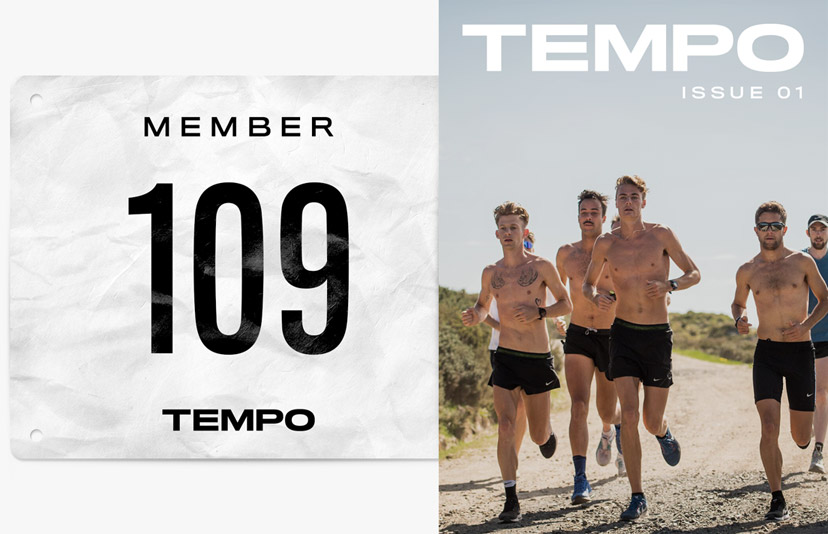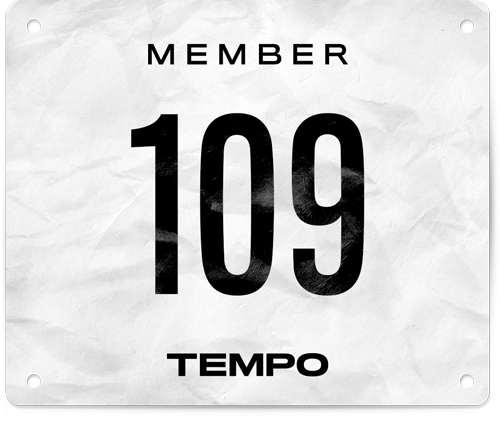Lifestyle
The Perfect Runner's body
Take it from a national champion and run coach
Editor's Note: Lydia O'Donnell is a familiar name for TEMPO readers. Not only did Lydia captain our record breaking team at The Speed Project in 2019, she's an elite marathon runner from New Zealand who finished 20th at the New York Marathon in 2018.
On top of this, Lydia is a multiple national champion on the track, co-founder of mental health run club One Step, and a run coach. Lydia is currently based in Los Angeles, California. You can connect with Lydia here.
Growing up as a runner, I always doubted myself. Not because I doubted my ability to race, or my ability to train. It wasn’t what my body could do, it was how my body looked. Even though I enjoyed running, and was pretty good at it, I could never see myself on the world stage amongst the talented female athletes, purely because I wasn’t tall, or lean, or naturally ‘skinny’. And unfortunately, even as a teenager, I believed that in order to be fast, I had to fall under at least one, if not all of those stereotypes.
Running is a beautiful thing. Raw and gritty, but beautiful. And to me, female runners are the epitome of strength and beauty combined. The relentless determination to succeed as a runner has to come from somewhere inside. And for me that determination came from being a young athlete growing up in the '90s. The competitive nature that arose through school athletics days, the weekends of exploring on your ‘10km long run’, the dreams of making Olympic teams and representing your country – are just parts of what made me fall in love with the sport. But unfortunately, the memories of growing up a female athlete were not all positive.
The pressure. The pressure to win, the pressure to be the fittest, the fastest, and the pressure to fit into a mould of what society thinks a female runner should look like.
Throughout my teenage years I started to weigh myself. I would get on the scales every day to compare myself to my best friends who ran. And this continued all the way into my early 20’s, only it was no longer my best friends I was comparing myself to, it was the best athletes in the world. Through the rise of social media, the pressure to fit a certain mould is inescapable. Comparing my body to the lean bodies of the best female track and marathon athletes made me believe I didn’t deserve the success they had. I compared my times to theirs and convinced myself they were faster because they were skinnier. I felt defeated because of the way I looked.
And it wasn’t just social media that contributed to the pressure. I felt the need to lose weight to impress my coach, to get approval from team selectors, to get noticed when turning up to events and taken seriously in the running world.
I really believed that there was a perfect running body shape, and that body shape was not mine.
"The pressure. The pressure to win, the pressure to be the fittest, the fastest, and the pressure to fit into a mould of what society thinks a female runner should look like."
Lydia O'Donnell
Fortunately, although I felt the pressure to fit in, I knew what the effects of being under-weight could be, especially for a female athlete. Growing up we were taught about the Female Athlete Triad (FAT). We learnt the repercussions of under-fuelling leading to menstrual issues, and also the effects on bone health which could potentially stop you from running altogether. But instead of celebrating the fact I wasn’t suffering from any of the above, I lost even more confidence as a runner. I believed that you were only a serious athlete if you were skinny enough to lose your period, or suffer from stress fractures, and because I had neither I thought I would never be good enough.
I have always been the ‘strong’ looking runner, the ‘healthy’ looking runner. Two words I have despised until recently because to me, they indicated I was bigger than everyone else. But it is now evident that healthy and strong represent sustainable and consistent. Two things we need to be to have a long career in running.
I ran my first marathon in 2015, finishing 2nd at the Melbourne Marathon. It was a light bulb moment for me; I finally realised the value of my body and what it could do. I remember coming through the MCG and thinking, ‘how is this possible? I am not fast. I don’t even look like a marathon runner. Surely I didn’t get 2nd?’. On reflection I realized that getting across that finish line, no matter what placing I came, this body carried me through 42.2km and the strength of what my mind could do was far greater than the outside pressures of the athletics community.
Body image can be a controversial conversation in the running world and a much talked about one in this day by many elite athletes. But the rise of Allie Kieffer has been somewhat inspiring and motivating to watch. Allie is renowned for highlighting the body image conversation, and after placing 5th in the NYC Marathon in 2017, and 7th in 2018, she has every right to stand up to critics. Allie talks openly about her body type and is an advocate for #strongnotskinny. Although Allie has faced some backlash on her messaging, personally I find it refreshing to hear from an athlete that doesn’t fit into the mould.
"I realized that getting across that finish line, no matter what placing I came, this body carried me through 42.2km and the strength of what my mind could do was far greater than the outside pressures of the athletics community."
Lydia O'Donnell
Allie’s success and her incredibly fast times, running a 2.28.12 in 2018, solidified the thought for me that there is no ‘perfect’ running body, that we are all different athletes. We all have strengths and weaknesses, and to progress I needed to set aside the negative commentary that under-fuelling my body is the way to compete with those elite females.
As a female, it’s not just athletes who can feel like their worth is tied to their looks. But as a runner, the societal pressures around body type can be detrimental to an athletes confidence and therefore their love for the sport, their longevity in the sport and their potential career in the sport.
The way our bodies look and the way our bodies move is not correlated. The ability of a female athlete should be seen through their fierce determination to train hard and race hard, not through the appearance of their exterior.
The perfect running body belongs to anybody who runs.
Editor's Note: Stay tuned for Lydia's next column soon on TEMPO.


